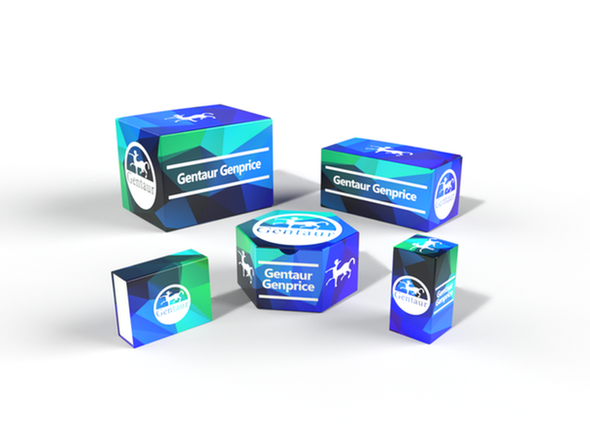Description
KCNK10 Antibody | 28-282 | Gentaur UK, US & Europe Distribution
Host: Rabbit
Reactivity: Human, Mouse, Rat, Dog
Homology: N/A
Immunogen: Antibody produced in rabbits immunized with a synthetic peptide corresponding a region of human KCNK10.
Research Area: Membrane
Tested Application: E, WB
Application: KCNK10 antibody can be used for detection of KCNK10 by ELISA at 1:12500. KCNK10 antibody can be used for detection of KCNK10 by western blot at 2.5 μg/mL, and HRP conjugated secondary antibody should be diluted 1:50, 000 - 100, 000.
Specificiy: N/A
Positive Control 1: Cat. No. 1211 - HepG2 Cell Lysate
Positive Control 2: N/A
Positive Control 3: N/A
Positive Control 4: N/A
Positive Control 5: N/A
Positive Control 6: N/A
Molecular Weight: 59 kDa, 60 kDa, 60 kDa
Validation: N/A
Isoform: N/A
Purification: Antibody is purified by protein A chromatography method.
Clonality: Polyclonal
Clone: N/A
Isotype: N/A
Conjugate: Unconjugated
Physical State: Liquid
Buffer: Purified antibody supplied in 1x PBS buffer with 0.09% (w/v) sodium azide and 2% sucrose.
Concentration: batch dependent
Storage Condition: For short periods of storage (days) store at 4˚C. For longer periods of storage, store KCNK10 antibody at -20˚C. As with any antibody avoid repeat freeze-thaw cycles.
Alternate Name: KCNK10, TREK2, TREK-2, K2p10.1
User Note: Optimal dilutions for each application to be determined by the researcher.
BACKGROUND: KCNK10 encodes one of the members of the superfamily of potassium channel proteins containing two pore-forming P domains. The message for this gene is highly expressed in the kidney and pancreas. This channel is an open rectifier which primarily passes outward current under physiological K+ concentrations. The protein is stimulated strongly by arachidonic acid and to a lesser degree by membrane stretching, intracellular acidification, and general anaesthetics. Three transcript variants have been identified for this gene.






